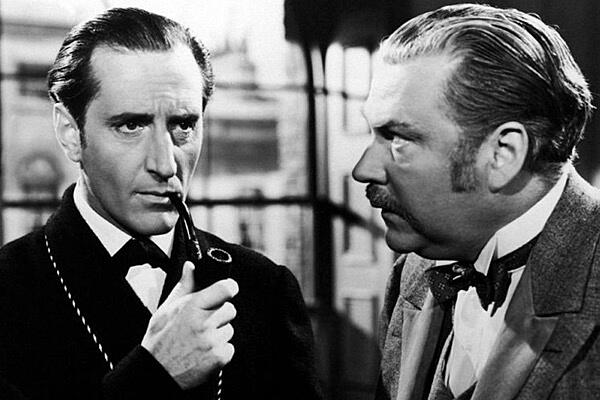
Lesson #6: Outlining, Part III — The Importance of Character Descriptions
Many beginner writers make the mistake of focusing on hair color, eye color, height, and race when describing their characters. While those elements help create a picture in readers’ heads, they don’t really make a character stick out.
Think about signature attributes

You want something that imprints in the readers’ minds and helps to define the characters themselves.
Think Katniss Everdeen’s braid, which aligns with her practical, self-sufficient nature. She can’t have her hair in her face when she’s hunting or fighting. Think Sherlock Holmes’ pipe, which he puffs on furiously when he’s puzzling over a particularly difficult case. Think the large, pale “vulture-eye” in Poe’s “The Tell-Tale Heart,” which serves as the catalyst for the entire story. The old man is never named, but you remember him clearly, don’t you? That is the power of excellent character description.
Behavior

As you might have picked up from the Sherlock Holmes example, a character description does not always have to deal in appearance. Gestures, habits, and tics are very much a part of character description and should showcase a new aspect of personality. If your readers become familiar with a character’s gestures, they will know when they are angry, anxious, or happy without you spelling it out for them.
Symbolism
Symbolism is an element of character description that can be fun to play around with. You can use indirect suggestion through imagery to give readers a hidden clue or message.
Flannery O’Conner was a master of inserting symbolism in her character descriptions. In “Good Country People,” those attuned to symbolism might have guessed the Bible salesman’s true nature from the get-go. His signature suitcase of Bibles is so heavy that it tilts him to one side. He is literally a crooked salesman. Dropping symbolic Easter eggs like this is not only fun for you, but also for your more eagle-eyed readers.
Questions to ask to define a character’s appearance
- Hair and eye color? (Basics, but classics.)
- Any “flaws”? Scars, crooked nose, etc. (Don’t make all your heroes look like movie stars: that isn’t very realistic.)
- What’s their body type? Skinny, lanky, short, pudgy, etc.
- What are some of their physical habits? Do they twirl their hair, wring their hands, stand with hands on hips? (Think about people you know and observe those you don’t to help you come up with ideas.)
- What gestures do they use when they are happy, sad, scared, angry, etc.?
Make your characters distinctive from each other. Of course, siblings will share some traits, and friends should have similarities that help them get along — just don’t have a bland collection of nearly identical personalities.
Good descriptions allow your readers to picture your characters and make them last in readers’ minds long after the book is closed.
Tomorrow we’ll look at using flashbacks to flesh out a character. I’ll see you then!
Hannah
Recommended Resources
- Body Language Cheat Sheet for Writers (infographic)
- Purple Prose (and How to Avoid It) (blog post)
Brought to you by Hannah Sandoval
Hannah Sandoval is a freelance ghostwriter and copy editor who has worked on over two dozen manuscripts, and a published author herself. Her guilty pleasures are Rocky Road ice cream and crime TV shows. If you would like to connect with her to discuss assistance with your manuscript or character outlines, check out her Reedsy profile.

|
|||
|
Top publishing professionals can help make your writing dreams a reality. Sign up to meet them. |

|
Copyright © 2025 Reedsy, All rights reserved.